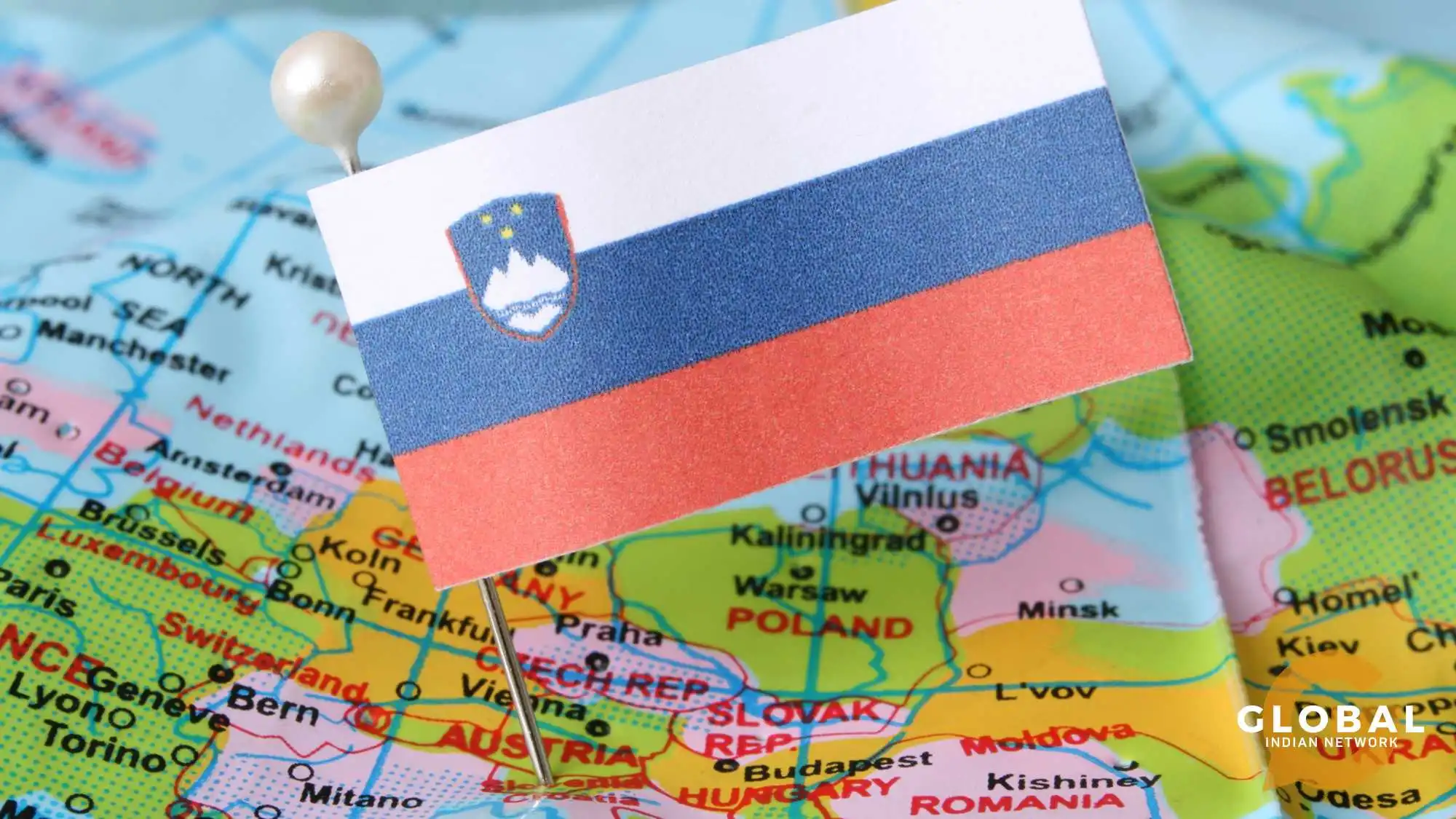Present-day Slovenia, or the Republic of Slovenia, lies in Central Europe, dotted by Lake Bled and the Julian Alps. It became independent in the 20th century. They are a south-Slavic ethnic group dating back to the 5th-6th centuries. However, its tremendous cultural and economic growth in the 21st century is fascinating and inspiring. The Slovenian population has preserved its rich cultural heritage- its native language, Slovenian cuisine, and historical centres- through freedom movements and other events. This has become one of the popular destination country walkers in European countries.
Let us look closely to understand what makes Slovenia unique.
Table of Contents
What Makes Slovenia Unique? – Answered
Slovenia’s uniqueness stems from a harmonious blend of diverse elements. Its rich culture, reflected in medieval towns and vibrant festivals, intertwines seamlessly with a culinary scene that celebrates local flavours. Nestled in the heart of Europe, Slovenia’s breathtaking natural beauty, from the Julian Alps to the Adriatic coastline, further enhances its allure. The convergence of various factors in one country makes Slovenia distinctive and a treasure to explore. Let us look at all these factors one by one.
The Rich Cultural Heritage
The culturally lively atmosphere of Slovenia is attributed to its unique geographical position. It does not lie in either Eastern Europe or Western Europe and has limited seaside land. It shares its border regions with Austria, Hungary, Croatia and Italy. So, there are cultural influences from its neighbouring countries.
Historically, present-day Slovenia was ruled by the Austro-Hungarian Empire. Later, after World War II, it came under the aligned movement with the eastern bloc of Yugoslav Republics as federal Slovenia. However, the freedom movement for a semi-independent South Slavic State originated in the early 20th century. In 2004, it became a part of the European Union. This shaped the present traditional regions -the country’s food, language, and cultural heritage.
Amidst challenging circumstances, the 19th century witnessed a resurgence in Slovene culture and language, fostering the growth of the concept of cultural and political autonomy.
Native Language
The official language of Slovenia is Slovene, a South Slavic language. A majority of the population speaks the Slovene language. Other languages of former Yugoslav republics, such as Croatian and Serbian, are also spoken. However, the Slovenian population is well-versed in foreign languages, including English. What is intriguing is that the differences are celebrated in every aspect of life. Slovenia has beautifully retained its diversified culture.
The Most Green of European Countries
Slovenia is one of the greenest and most sustainable countries in the world. Forests cover the majority of the land. Rivers and mountains cover it, and it is highly elevated. The capital, Ljubljana, was awarded Europe’s Greenest Capital in 2016. The ethereal and lush green landscape, speckled with endearing cafes and eateries at the side of the river, makes it an eco-friendly tourist site.
The government and Slovene population firmly believe in protecting their treasures of nature and inherited heritage. They have taken sustainable measures in daily life and have instilled a Green scheme mechanism in Slovenian Tourism.
The Adventurous Slovenian Population
The Slovenian population is regarded for its inadvertent sporting spirit. In their leisure time, people are keen to participate in various outdoor activities such as hiking, mountaineering, skiing, jogging, and cycling. Marija and Andrej Stremfelj hold the record of being the first married couple to climb Mount Everest. Skiing and cross-country skiing are popular in Slovenia. Planica Valley under the ponce mountains is home to the largest ski-flying hill in the world.
The country’s topographical reliefs make it suitable for adventurous activities. The Triglav National Park is 9300 feet above Mount Triglav amidst the Julian Alps. The trails at Vintar Gorge are famous retreats for hikers. The thousands of kilometres of trails are well-kept with resting places and meals. The view at 1000 meters above is awe-inspiring and relaxing.
Slovenian Cuisines
Slovenia has a diverse range of Slovene dishes distributed over 24 gastronomic regions. The traditional Slovenian cuisines are rich in flavours and spices.
The one-pot dishes made on Sundays and festivals consist of fresh vegetables and local ingredients and are healthy and savoury. Obara stew is a famous one-pot dish. Pastries and desserts like gibanica and kremna rezina are popular Slovenian cuisines. The sweet potica is a traditional Slovenian pastry with more than 50 fillings. You can try out other Slovene dishes such as Kranjska Klobasa, the traditional sausage and Idrijski žlikrofi, the traditional dumplings made with potato and dough. You can also find European cuisines in the Michelin star restaurants in Present-day Slovenia.
The Healthy Slovenian Population
The civilian population of Slovenia is healthy. It is attributed to the numerous spas and resorts set up across the natural region of the country. Interestingly, you’ll find thermal springs at the border region of eastern Slovenia!
Thermal pools towards the far eastern Europe of Pannonnian’s mystical plains are therapeutic. The hot baths at the spas and resorts calm your nerves and give you a heavenly experience.
Watch Bears
After World War 2, bears were on the verge of extinction in European countries, but the sustainable measures taken by the Slovenian population have tackled this problem. The natural relief features of the country are an ideal home for the species. Now, there are more than 1000 bears in the forested regions of the country. Watching wild brown bears has become a major attraction for tourists.
Rivers in Slovenia
Slovenia’s Riviera is a paradise; it captivates you with its breathtaking view and visual pleasure! The transparent, clear water of 30000 km of rivers and streams across the country makes it a favourite spot for watersports such as swimming, kayaking, etc.
Lake Bled, Lake Bohinj and Lake Lljubjana are famous scenic Lakes in Slovenia.
Wine is Love
Slovenia is famous for producing some exotic qualities of wine or vino. The Slovenian population loves to grow grapes, and a wider region of land -22,000 hectares- is made up of vineyards. Every other Slovenian in 70 people owns a vineyard. The Old Vine House, the world’s oldest vine, is over 400 years old and located in Maribor.
There is a wide variety of wines: Reisling, Sauvignon Blanc, Pinot Gris from Podravia, and Chardonnay from Primorska. The traditional region of indigenous grapes found in the Vipava Valley near the Italian border region are some examples of wine. The quasi-Mediterranean climate in central Europe and cool air blowing from the Alps make it fitting for wine production.
Historical Caves
The scenery in Slovenia is mesmerising, but the wonders underground can just awe-struck you! Slovenia is home to 8000 caves. The vast number of caves is the result of carbonate bedrock. However, only 20 caves are open for touring expeditions for safety reasons. The Postojna cave is 2 million years old and runs 20 kilometres, which makes it Slovenia’s biggest and longest karst cave system.
Also, the olm or the aquatic salamander lives in the Postojna cave. This rare cave inhabitant is the natural heritage of Slovenia. They live up to 100 years and breed once or twice a decade.
Riding the trails of one of the largest underground canyons in the world in Škocjan Caves is thrilling. Škocjan Caves are massive, and You can’t afford to miss the stunning caves!
Conclusion
Slovenia’s uniqueness lies in the genuine warmth of its people, exemplified by their renowned hospitality. Visitors unearth the distinctive allure of this European gem by savouring delightful Slovenian cuisine and immersing themselves in a rich cultural heritage. From welcoming locals to diverse landscapes, what makes Slovenia unique extends beyond its scenic beauty, establishing it as an unparalleled destination for country walkers seeking an unforgettable experience.
FAQs
What is Slovenia known for?
Slovenia is known for its lush green forest, mountains and scenic beauty blended with lip-smacking Slovenian cuisines. The Slovenian population is famous for its love for wine.
Why is Slovenia so beautiful?
Slovenia is adorned with beautiful Lake Bled and the Julian Alps. The civilian population takes utmost interest in preserving the natural landscape.
What food is Slovenia famous for?
Slovene dishes contain a variety of one-pot dishes and traditional pastries.
What is the most famous thing about Slovenia?
Slovenia is famous for its greenest capital in Europe, Ljubljana.









